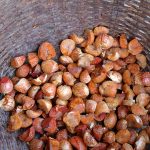The illipe nut, scientifically known as Shorea stenoptera, is a remarkable botanical treasure native to the lush rainforests of Southeast Asia. Renowned for its rich composition and versatile applications, illipe has been cherished by indigenous communities and garnered attention worldwide for its myriad of uses in various industries, ranging from skincare to confectionery. This article aims to delve into the multifaceted aspects of the illipe nut, exploring its cultural significance, nutritional properties, industrial applications, and sustainability considerations.
Cultural Significance and Indigenous Knowledge
For centuries, the indigenous communities of Southeast Asia, particularly in countries like Malaysia, Indonesia, and the Philippines, have revered the illipe nut for its multifunctional properties. Traditionally, illipe butter extracted from the nut has been utilized in culinary practices, medicinal remedies, and skincare routines. These communities have passed down invaluable knowledge through generations, recognizing the nut’s ability to nourish, moisturize, and heal.
In local folklore and traditional medicine, illipe holds a special place, often symbolizing vitality, fertility, and prosperity. Its usage extends beyond practical applications, intertwining with cultural ceremonies and rituals. Furthermore, the harvesting and processing of illipe nuts have fostered communal bonds and traditions among indigenous groups, highlighting the socio-cultural significance embedded within.
Nutritional Composition and Health Benefits
Illipe nuts are not only esteemed for their cultural heritage but also for their impressive nutritional profile. Rich in essential fatty acids, such as oleic and stearic acids, as well as vitamins E and A, illipe butter offers numerous health benefits. These fatty acids play a crucial role in maintaining skin health, promoting elasticity, and preventing moisture loss, making illipe butter a popular ingredient in skincare formulations.
Moreover, the antioxidant properties of vitamins E and A present in illipe contribute to combating free radicals, thereby reducing oxidative stress and inflammation in the body. Additionally, the presence of phytosterols in illipe aids in cholesterol management and cardiovascular health. Thus, incorporating illipe into one’s diet or skincare regimen can contribute to overall well-being and vitality.
Industrial Applications and Economic Importance
The versatile nature of illipe extends beyond traditional uses, as it has garnered significant attention in various industries worldwide. In the cosmetic and skincare sector, illipe butter serves as a valuable ingredient in formulating moisturizers, lip balms, lotions, and hair care products. Its emollient properties and ability to enhance product stability make it a preferred choice for manufacturers seeking natural and sustainable alternatives.
Furthermore, the food industry harnesses the nutritive properties of illipe in confectionery, bakery, and culinary applications. Illipe butter’s high melting point and stable composition make it an ideal substitute for cocoa butter in chocolate production, imparting a creamy texture and enhancing flavor profiles. Additionally, its resistance to rancidity prolongs the shelf life of products, ensuring freshness and quality.
From a socio-economic perspective, the cultivation and trade of illipe nuts contribute to the livelihoods of countless individuals in rural communities. Smallholder farmers and cooperatives rely on illipe harvesting as a source of income, fostering economic resilience and sustainable development in remote areas. Moreover, initiatives promoting fair trade practices and environmental stewardship have further enhanced the socio-economic impact of illipe cultivation, empowering local communities and promoting equitable growth.
Sustainability Considerations and Conservation Efforts
Despite its myriad of benefits, the sustainability of illipe cultivation faces challenges stemming from deforestation, habitat loss, and climate change. The expansion of agricultural activities, including palm oil plantations, poses a threat to the natural habitats of illipe trees, jeopardizing biodiversity and ecosystem integrity. Additionally, unsustainable harvesting practices and lack of regulation can further exacerbate these environmental pressures.
In response to these challenges, various stakeholders, including governments, non-profit organizations, and industry players, have initiated conservation efforts and sustainable management practices to safeguard illipe forests and promote responsible harvesting. Strategies such as agroforestry, community-based conservation initiatives, and certification programs aim to balance economic development with environmental protection, ensuring the long-term viability of illipe cultivation while preserving biodiversity and ecosystem services.
Furthermore, consumer awareness and demand for sustainably sourced products have catalyzed industry-wide commitments to ethical sourcing and environmental stewardship. By supporting certified sustainable illipe products and engaging in transparent supply chains, consumers can contribute to conservation efforts and promote the responsible management of natural resources.
The illipe nut stands as a testament to nature’s bounty, offering a wealth of benefits to both people and the planet. From its rich cultural heritage and nutritional properties to its versatile applications and economic significance, illipe embodies the harmonious relationship between humans and the natural world. As we navigate the complexities of sustainability and conservation, the preservation of illipe forests serves as a poignant reminder of our collective responsibility to safeguard biodiversity, uphold indigenous knowledge, and foster equitable development for generations to come.

Leave a Reply